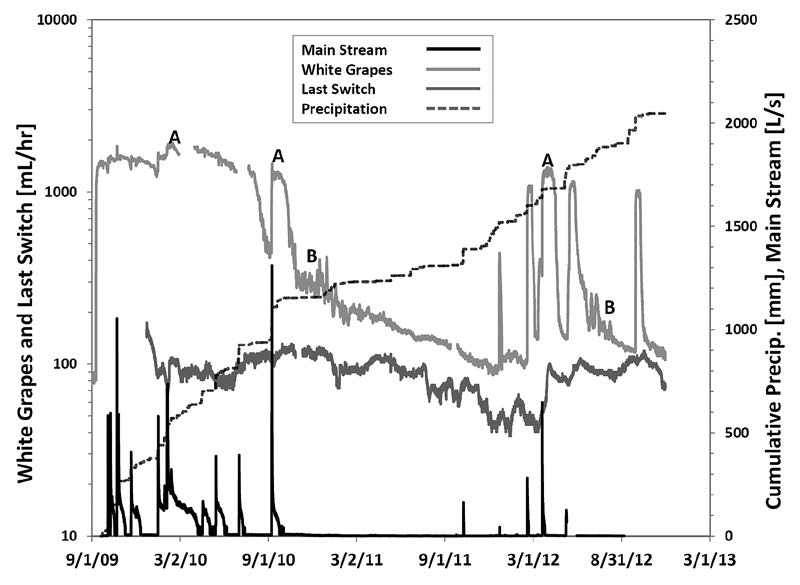Using hydrogeochemical and ecohydrologic responses to understand epikarst process in semi-arid systems, Edwards plateau, Texas, USA
DOI:
https://doi.org/10.3986/ac.v42i2-3.670Ključne besede:
hydraulic disconnection, precipitation thresholds, root zone, plant water use, recharge, epikarst storage, barometric pressurePovzetek
The epikarst is a permeable boundary between surface and subsurface environments and can be conceptualized as the vadose critical zone of epigenic karst systems which have not developed under insoluble cover. From a hydrologic perspective, this boundary is often thought of as being permeable in one direction only (down), but connectivity between the flow paths of water through the epikarst and the root systems of woody plants means that water moves both up and down across the epikarst. However, the dynamics of these flows are complex and highly dependent on variability in the spatial structure of the epikarst, vegetation characteristics, as well as temporal variability in precipitation and evaporative demand. Here we summarize insights gained from working at several sites on the Edwards Plateau of Central Texas, combining isotopic, hydrogeochemical, and ecophysiological methodologies. 1) Dense woodland vegetation at sites with thin to absent soils (0-30 cm) is in part supported by water uptake from the epikarst. 2) However, tree transpiration typically becomes water-limited in dry summers, suggesting that the plant-available fraction of stored water in the epikarst depletes quickly, even when sustained cave drip rates indicate that water is still present in the epikarst. 3) Flow paths for water that feeds cave drips become rapidly disconnected from the evaporation zone of the epikarst and out of reach for plant roots. 4) Deep infiltration and recharge does not occur in these systems without heavy or continuous precipitation that exceeds some threshold value. Thresholds are strongly correlated with antecedent potential evapotranspiration and rainfall, suggesting control by the moisture status of the epikarst evapotranspiration zone. The epikarst and unsaturated zone in this region can be conceptualized as a variably saturated system with storage in fractures, matrix porosity, and in shallow perched aquifers, most of which is inaccessible to the root systems of trees, although woody vegetation may control recharge thresholds.
Keywords: hydraulic disconnection, precipitation thresholds, root zone, plant water use, recharge, epikarst storage, barometric pressure.
Prenosi

Prenosi
Objavljeno
Kako citirati
Številka
Rubrike
Licenca
Avtorji jamčijo, da je delo njihova avtorska stvaritev, da v njem niso kršene avtorske pravice tretjih oseb ali kake druge pravice. V primeru zahtevkov tretjih oseb se avtorji zavezujejo, da bodo varovali interese založnika ter da bodo povrnili morebitno škodo.
Podrobneje v rubriki: Prispevki




